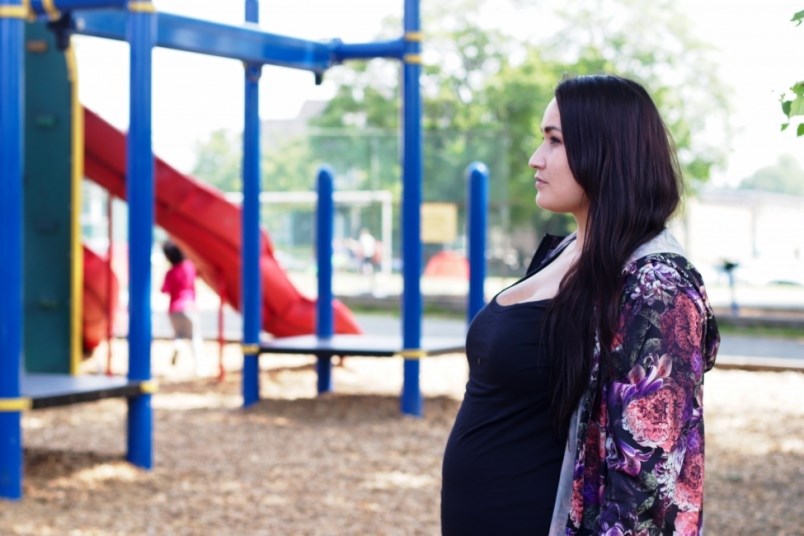This story was produced as part of Spotlight: Child Welfare, a collaborative journalism project that aims to deepen reporting on B.C.’s child-welfare system. It was edited by Robin Perelle and fact-checked by Francesca Fionda. Brittany Hobson contributed research. It was originally published by The Discourse. Tell us what you think about the story.
When it comes to child welfare, social work experts and parents in B.C. say we’re investing in the wrong end of the system — pouring money into foster care instead of offering adequate support to vulnerable families, many of whom are Indigenous.
“We’re willing to give strangers just about anything to look after kids,” says Jeannine Carriere, a social work professor at the University of Victoria, who is Métis. “But we have this blockage when it comes to supporting families.”
As part of a collaborative investigation into B.C.’s child-welfare system, journalists from The Discourse, The Tyee and Star Vancouver asked parents whether they felt they were getting adequate support — financial and otherwise — before their kids were apprehended by B.C. social workers. Of the 30 parents who filled out our questionnaire, 29 told us they weren’t getting the support they needed. Only one parent told us told us the question wasn’t applicable because she and her husband were “financially stable” and had “no issues.”
Data from the Ministry of Children and Family Development shows nearly 75 per cent of the kids in their care by December 2018 were apprehended because of “neglect,” a term experts say is too often linked to poverty. But financial support for at-risk families can add up to less than what is available for foster parents.
“Sadie” — a mother from the Squamish First Nation whose real name we’re withholding to protect her children’s identities — said she knew her son was struggling by the time he was eight or nine years old. She said she “begged” the ministry for support for years, but “no adequate, consistent or relevant services were provided.”
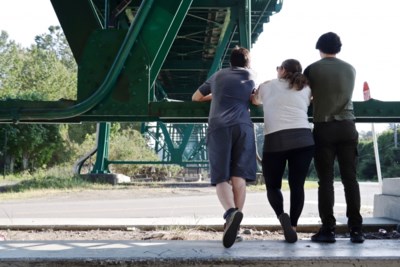 “Sadie” (whose name we’re withholding to protect her children’s identities) stands with her sons under the Lions Gate Bridge in North Vancouver. (via Brielle Morgan/The Discourse)
“Sadie” (whose name we’re withholding to protect her children’s identities) stands with her sons under the Lions Gate Bridge in North Vancouver. (via Brielle Morgan/The Discourse)“We were pigeonholed and deemed not critical or important until [our son] was suicidal,” she wrote in our questionnaire. “No cultural supports [were] offered to us.”
Ronda Merrill-Parkin, who’s a member of the Fond du Lac First Nation, told us she reached out to ministry social workers when she started feeling depressed last year, to no avail. “I told them that I needed help, and they didn’t listen to me,” she alleges.
She says she placed her children in care on voluntary care agreements, and shortly afterward they were apprehended. That was last October; they were only returned to her in May 2019.
“We’re investing in the wrong area,” says Jennifer Chuckry, executive director of Surrounded by Cedar — one of 24 agencies delegated by the province to deliver child-welfare services to Indigenous children and families in B.C.
“We need to be investing in children and families long before there is a child-protection concern,” she says. “Instead of paying caregivers hundreds of thousands of dollars to keep kids in care.”
Low-income families don’t feel supported
Patricia Douglas is a Chilliwack resident and member of the Douglas First Nation. She says that just prior to her child’s apprehension in 2015, she’d been relying on permanent disability as her main source of income, and she was struggling to afford basics like fresh fruit and vegetables. “I had to look for sales to get the staples to fill my kitchen,” she says.
For Douglas, walking her daughter to school was an exercise in shame.
“Taking her to school, making sure that she had all the clothes and shoes and food [she needed]. It was — it was a bit shameful, you know, being looked down upon.”
After her daughter was apprehended, poverty made it harder to meet the ministry’s expectations, she says.
“I had so many challenges just trying to get to the meetings on foot and on [the] bus,” she says. “[The meetings] were on the other side of town, a 40-minute walk, you know, and I didn’t have $2 for bus.”
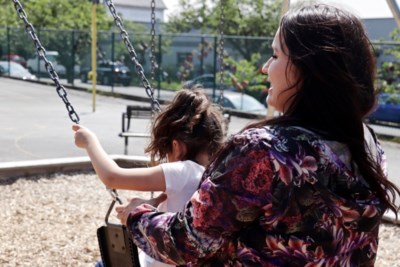 Ronda Merrill-Parkin plays with her daughter in a Vancouver schoolyard. (via Brielle Morgan/The Discourse)
Ronda Merrill-Parkin plays with her daughter in a Vancouver schoolyard. (via Brielle Morgan/The Discourse)B.C. has the second-highest provincial poverty rate in Canada, government statistics show. Around 81,000 children are living in poverty, and many studies have demonstrated the link between poverty and child apprehensions.
For example, a 2017 UBC study looked at 85 child-protection cases that went to trial between January 2002 and June 2015 in B.C. — and found that poverty was “pervasive” in these cases.
“A large majority of the cases involved a woman raising children in conditions of extreme economic disadvantage and social marginalization, consistent with other data that shows that apprehensions occur more often in poor families headed by lone mothers,” the study found.
More than half of the parents who filled out our questionnaire said they’d been receiving some sort of income or disability assistance when their children were taken away. Many had experienced domestic abuse. And while one parent told us they weren’t looking for support prior to their children’s apprehension, the vast majority of the parents we heard from told us they were actively seeking financial support, respite care, mental health services or other kinds of support for their families.
Tim Felger, a pot activist based in Abbotsford, says he was on welfare when his child was removed in 2011. He says he was living in the cheapest apartment he could find in Abbotsford, but by the time he paid his rent — $600 per month — he had next to nothing left for food and other basics.
The B.C. government’s monthly rate for income assistance — meant to cover shelter, food and transportation — was just $610 at the time.
“With the government having an eye toward taking your child and keeping it, you know, you’re emotionally traumatized,” he says.
“There’s a tremendous power imbalance to begin with,” he says, “and then, when you’re working against all these other stresses, if the ministry’s giving you a hard time, sometimes you can work through it. But if you’ve got nothing to go home and eat, you know, it sort of amplifies and exacerbates all the problems you have.”
According to an email from B.C.’s Ministry of Children and Family Development, “the strategic direction of the ministry is to invest in supports to help preserve families, while continuing to ensure the safety of children and youth.”
But there’s a perception among the parents we heard from that the government provides more support for foster parents than they do for families who are struggling and at risk of separation.
And this perception isn’t unique to people who’ve had their kids removed.
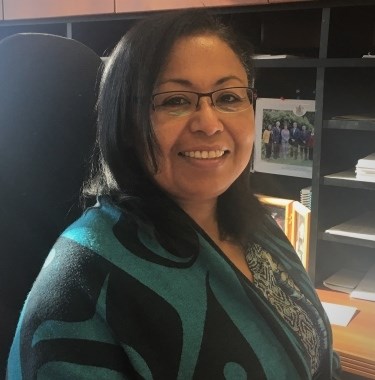 Cheryl Casimer, who sits on the First Nations Summit Task Group in B.C., questions the government’s allocation of funds. (Courtesy of First Nations Summit)
Cheryl Casimer, who sits on the First Nations Summit Task Group in B.C., questions the government’s allocation of funds. (Courtesy of First Nations Summit)“When they remove children from a family in a home and put the child into another home, they pay that family a substantial amount of money to look after these children,” says Cheryl Casimer, who sits on the First Nations Summit Task Group in B.C.
“Why didn’t they just take that money they were going to pay to foster care into the family and put preventative measures and family supports into place — so that that family unit can stay together?”
When asked what kind of support would have made a difference to her family, Douglas says, “more community support with the kids or more access to food banks or more access to cheaper transportation — little things to make life a little bit easier.”
According to the ministry’s online reporting portal, in 2017/18 the ministry spent $306 million on “Children & Youth In Care.” In comparison, the ministry spent $119 million on “Family Support Programs.” But it isn’t clear which families the ministry is supporting with that money — foster parents or parents at risk of losing their kids.
The Discourse asked the ministry to clarify. “Unfortunately, a more detailed breakdown of ministry spending on children and youth in care versus family preservation cannot be provided without extensive further analysis,” a ministry spokesperson replied via email.
“This is due in part to the way programs are funded,” he explained. “Some programs and service lines will serve clients both in and out of care; some contracts provide services for families as an alternative to removal, while also offering services to children who have been removed.”
Casimer calls that response “scary, in that they’re not able to put their finger on the amounts that are specific to supporting families, particularly Aboriginal families.”
“We hear on the ground that even though contracts have been awarded to certain organizations, the services that are being provided to Aboriginal children and families is minimal,” she says.
According to the ministry, the $119 million for Family Support Programs represents “external contracts only and did not include those support services offered by ministry staff.” So it doesn’t capture the full picture “of the ministry’s investment in family supports,” the spokesperson said.
Nor does it reflect support services provided byother “contracted agencies, community partners and other ministries which are not represented in the scope of MCFD spending,” he added.
He also noted that the overall number of kids being taken into care in B.C. has steadily declined from 7,736 in 2015 to 6,263 in March 2019.
Casimer says the First Nations Summit is currently pushing the province and the federal government for “a full evaluation of all of the contracts that are earmarked with anything to do with Indigenous or Aboriginal. So that we can see exactly where the funds are going.”
The Discourse has filed a freedom of information request for a more detailed breakdown of the ministry’s “Family Support Programs” budget.
‘Parent unable/unwilling to care’
As of December 2018, nearly three quarters of all kids in the ministry’s care were apprehended because of neglect — and according to child welfare experts like Casimer, Chuckry and professor Nico Trocmé, “neglect” is too often code for poverty.
But it shouldn’t be considered neglect when “a family is struggling to be able to make ends meet and put food on the table and clothes on the kids’ back,” Casimer says, “particularly if you’re in a community where there’s no economy, there’s no capacity.”


Often what we’re actually talking about is poverty, says Jennifer Chuckry, who has more than two decades of social work experience.
In a system where Indigenous kids are grossly overrepresented due to the ongoing impacts of colonial policies and intergenerational trauma, fully three quarters of Indigenous kids in care in B.C. were apprehended because of “neglect.”
And according to the ministry’s data, nearly half of those kids were removed because their allegedly neglectful parent was “unable or unwilling to care.”
“There are many circumstances where a family is struggling with addiction or whatever, and yeah, there is an inability to [parent], but unwilling to? I have yet to meet a parent in my career that was unwilling,” Chuckry says.
“Our families are struggling in poverty, especially when you look at trying to make it in Vancouver or Victoria,” she continues. “In these larger centres, how do you rent a place if your only income is income assistance? You can’t even rent a cardboard box with what they give you, let alone have anything extra. These systems aren’t set up to see people become successful.”
At least a quarter of kids who are removed for neglect are removed because social workers determined that neglect led to physical harm or the “likelihood of physical harm,” according to an email from the ministry.
Physical harm due to neglect is defined as: “The parent has willfully not provided for the child/youth’s physical needs to the extent that the child/youth has already suffered or is imminently likely to suffer harm (injury, impairment or pain),” the ministry explained via email.
Physical harm in such cases also includes neglect that “exposes the child/youth to life-threatening hazards,” the ministry added, such as accessible toxic substances, dangerous weapons, or unguarded wells or balconies.
When it comes to assessing a likelihood of physical harm, the ministry says, social workers are looking for “a pattern or cluster of indicators that the parent does not or cannot provide for the child/youth’s physical necessities, including food and shelter, nurturance, and protection from risks.”
But “one of the main challenges associated with poverty is that of attaining safe and adequate housing,” wrote UBC nursing student Jacqueline Denison, in a paper published by the Journal of Advanced Nursing in 2014.
“From the health care provider participants’ perspectives, women living in poverty often live in environments that are not viewed by the child protection system as safe or adequate for raising children,” she said.
Chuckry says she knows of families in Victoria who have been separated by ministry social workers because of housing — because “the family house is not safe and they have no other option,” she says.
According to a ministry statement sent to The Tyee last November: “Essentially, if a family’s housing situation is the primary source of a health and safety concern involving a child, the ministry would – and must, as per legislation – explore all available less disruptive means,” including seeking other affordable housing options with the family.
But it takes resources to “explore all available less disruptive means.” And seven of eight social and support workers who responded to the support workers’ survey circulated by journalists at The Discourse, The Tyee and Star Vancouver,indicated there are not enough supports available for the families they work with.
“Due to financial constraints, requests for services are denied if they do not meet the extremely high criteria — meaning that services aren’t available until family is in crisis,” wrote one B.C. social worker with nearly a decade of experience, who asked that her identity be protected because she fears she losing her job.
 Tristen Wybou works with families in Prince Rupert and says they often struggle with “significantly long waitlists, untrained workers [and] lack of accessibility.” (via Patrick Shannon/Courtesy of Tristen Wybou)
Tristen Wybou works with families in Prince Rupert and says they often struggle with “significantly long waitlists, untrained workers [and] lack of accessibility.” (via Patrick Shannon/Courtesy of Tristen Wybou)“I consistently have parents who are made to feel ‘crazy’ for trying to advocate their child's need for services,” said Tristen Wybou, a counsellor who works with families in Prince Rupert and who also filled out our questionnaire.
“Some kudos does have to be given to the many workers who are truly doing the best with what they are given,” Wybou continued in a phone interview. “However, what they are given is often a whole pile of files and no support until they burn out completely.”
This lack of available resources and support disproportionately affects Indigenous mothers, Denison wrote in her nursing paper.
“For many Aboriginal women, social, political and economic factors such as poverty, inadequate housing, unemployment, substance use, and violence — largely stemming from a history of colonialism and ongoing neocolonial polices — have created a depiction of these women as neglectful mothers,” she wrote.
If anyone is being neglectful, it’s the child-welfare agencies, social work professor and activist Cindy Blackstock wrote in her 2011 paper, Wanted: Moral Courage In Canadian Child Welfare.
“If neglect means not doing the right thing for children even when you know better and can do better, and have the resources to do it, then too often child protection neglects First Nations children and their families,” she wrote.
“For over a decade, leading studies, such as the Canadian Incidence Study on Reported Child Abuse and Neglect (CIS), have suggested that culturally based services targeted at poverty, poor housing and substance misuse would reduce the over-representation of First Nations children in child welfare care,” she continued.
“Systemic changes to address these factors have been negligible.”
What kind of supports can low-income parents and foster parents access?
It’s difficult to say exactly how much support is available to low-income parents because it depends on so many variables: Are the children living with disabilities? Have they been diagnosed with Autism spectrum disorder, Fetal Alcohol Spectrum Disorderor complex health needs? Are they deaf or hard of hearing? For parents requiring income assistance, is it a one-parent family or a two-parent family? Does either parent meet the Persons with Persistent Multiple Barriers criteria?
If a low-income single parent in B.C. is supporting one child with a disability, they could receive $1,923 per month (or $1783 if the child is six or over) — if they file their taxes and successfully apply for the Disability Tax Credit, child disability benefit, B.C. Early Childhood Tax Benefit, Canada Child Benefit and income assistance.
Financial support for foster parents is a little more straightforward. Foster parents are eligible for monthly payments regardless of whether they have additional income. And if they’re caring for kids with especially complex needs, their basic monthly payment of $983 (or $1089, if the child is 12 or over) gets bumped up.
For example, foster parents trained to care for children requiring “extensive daily care,” additional support, supervision and “interventions related to mental health concerns” are eligible to receive up to $2800 a month per child age 11 and under ($2905 if the child is 12 or older).
The child disability benefit that low-income parents can apply for isn’t nearly as nuanced. The federal government doesn’t offer different levels of funding based on the complexity of a child’s need. Instead, parents raising kids with “severe and prolonged impairments in physical or mental functions” can get up to $231 per month per child.
And it’s not as simple as a cheque in the mail.
“To receive the Child Disability Benefit an individual must be eligible for the Canada Child Benefit for that child, and the child must also be eligible for the Disability Tax Credit,” a spokesperson for the Canada Revenue Agency told The Discourse via email.
This means filling out lots of forms, and then getting doctors to fill out forms, which the Canada Revenue Agency then has to approve. And it means staying on top of your taxes.
 “Sadie” (not pictured) says she had to push for nearly a decade to get a psycho-educational assessment for her son (above), after he’d expressed suicidal ideas at age 10. (via Brielle Morgan/The Discourse)
“Sadie” (not pictured) says she had to push for nearly a decade to get a psycho-educational assessment for her son (above), after he’d expressed suicidal ideas at age 10. (via Brielle Morgan/The Discourse)“Once an individual qualifies for the CDB [Child Disability Benefit] and the CCB [Canada Child Benefit], he or she needs to file an income tax and benefit return every year, even if they did not have income in the year,” the spokesperson said.
Beyond direct financial support, there are other factors to consider — like uneven access to support services such as respite care for kids with special needs.
One of the Ministry of Children and Family Development’s guiding principles states: “If, with available support services, a family can provide a safe and nurturing environment for a child, support services should be provided.”
The ministry says it provides some supports to families at risk of losing their kids, including access to limited discretionary funds to help pay for unforeseen costs; and culturally appropriate family preservation, mental health, and addictions’ services provided through third-party agencies contracted by the ministry.
But according to the 2017 study Intersecting Challenges: Mothers and child protection law in BC, “available support services presumably vary widely depending on location in the province.”
Just because a support exists in theory doesn’t mean it’s accessible to parents who are living in rural or remote communities, coping with the stressors of chronic poverty or systemic racism, or navigating the challenges of supporting children with disabilities.
“Dawn,” whose real name we’re withholding to protect her children’s identities, is an Indigenous mother in Merritt who’s living with disabilities. She says when she asked for respite care for her son, who’s living with autism, she was waitlisted for two years. One week after her son was placed in a foster home in Merritt, she says she heard from the foster parents that they were already receiving respite care.
“Families might be waitlisted for respite,” the ministry told The Discourse via email. “To access respite, families must go through an initial income-testing process” to determine “the parental contribution towards the service.”
When asked how long parents are waiting, on average, for respite care requests to be processed, a ministry representative said: “While hard data on waitlist times for both foster parents and community families is unavailable, we understand that timely access to respite services presents a challenge for many caregivers.”
In an effort to “significantly reduce the waitlist for respite services,” the B.C. government allocated an extra $6 million per year to respite care in its 2019 budget.
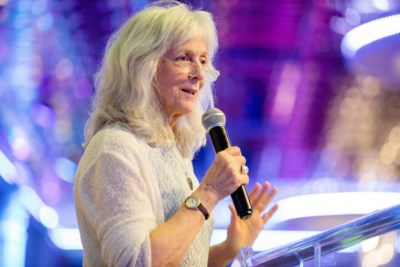 Adrienne Montani has spent nearly two decades at B.C.’s First Call, working to eradicate child poverty. (via Sarah Race)
Adrienne Montani has spent nearly two decades at B.C.’s First Call, working to eradicate child poverty. (via Sarah Race)Adrienne Montani is the provincial coordinator at First Call: BC Child and Youth Advocacy Coalition. She says when parents of children with special needs are waitlisted for services, like assessments and therapies, it sets up huge inequities between families that can afford to pay for private assessments and those that can’t.
“I think poor parents [and] caregivers wonder why their below-poverty-level incomes are not addressed, or they have to beg for supplements, or why they have to cope with limits on subsidized necessary dental care or vision care expenses,” she says. “Whereas if their children go into care, the limits and access to support services are different.”
According to an email from the ministry, foster parents do not have to be income-tested in order to receive respite care services. Foster parents caring for children with especially complex physical, mental, behavioural or emotional needs (i.e. level 2 and 3 foster parents) automatically qualify for up to three days of relief or respite care per month — regardless of how much money they make.
Prevention: the politics and the price tag
A recent study from the University of Ottawa found the current “protection-focused” system “fails to recognize the contextual challenges that lead to disadvantaged starting points for many communities” — and “significantly underfunds prevention.”
Decades of policies around residential schools, for example, have led to systemic issues unique to Indigenous communities, the study found, and “there is a cost to closing these gaps.”
Closing these gaps will cost hundreds of millions of dollars, the study says. More, if the Canadian government aims to raise Indigenous communities to median household incomes for their respective provinces, rather than just above the poverty line.
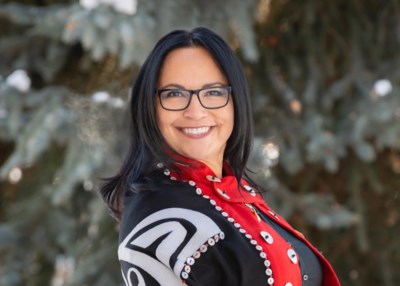 Adrienne Montani has spent nearly two decades at B.C.’s First Call, working to eradicate child poverty. (via Sarah Race)
Adrienne Montani has spent nearly two decades at B.C.’s First Call, working to eradicate child poverty. (via Sarah Race)Mary Teegee says greater investment in First Nations families would “be a first step in reconciliation.”
She’s the executive director of child and family services at Carrier Sekani Family Services. She also chairs the Delegated Aboriginal Agencies Provincial Forum, and represents B.C. on the National Advisory Committee on First Nations Child and Family Services.
It’s about equity, she says. If Canada truly wants to see Indigenous children and families thrive, we need to provide sufficient resources — like community mental health workers — so families are supported to heal and work through the intergenerational trauma wrought by the government’s actions, she says. “We’re going to need more help because of the atrocities.”
She’d like to see “an Indigenous national social policy where we actually look at those factors that are weakening families and communities: the issues of housing, the issues of poverty.”
“All of those pieces are really important to consider in a holistic sense,” she says, “rather than just looking at them in silos.”
She adds that a groundbreaking ruling by the Canadian Human Rights Tribunal in 2016, which found that the Canadian government was discriminating against Indigenous kids on reserves in the provision of child and family services, has been a game-changer with respect to funding for preventative services.
Before the ruling, “we didn’t get funded for prevention services for First Nations children on reserve,” Teegee says. Delegated Aboriginal Agencies could only bill for expenses related to keeping kids in care, she says.
“Now, not only do we bill for that, but we are also able, as per the Canadian Human Rights Tribunal, to bill for prevention, so that the children could stay with their families in community.”
While the Human Rights Tribunal’s decision may be spurring more support for families on reserve, that’s just one piece of the funding puzzle.
Indigenous and non-Indigenous parents who filled out our questionnaire shared many ideas for supports that could help families stay together: monthly allowances for clothing, food, transportation and rent; increases to income and disability assistance; safe, adequate and affordable family housing; access to counselling and other mental health treatment; affordable child care; culturally appropriate drug and alcohol treatment; respite care; and Indigenous social workers and foster families, to name just a few.
Many of these recommendations were echoed in the National Inquiry into Missing and Murdered Indigenous Women and Girls’ final report, which was released on June 3.
They’re also reflected in a new strategy introduced by the B.C. government in March. TogetherBC is B.C.’s poverty reduction strategy and it aims to reduce poverty by 25 per cent, and cut child poverty in half, over the next five years.
Under this new strategy, B.C. has promised to: increase rental relief and place caps on rent increases; build new affordable housing units for low-income families and women and children escaping domestic violence and upgrade old units; eliminate Medical Services Plan premiums; reduce and eliminate some fees associated with higher education accessibility; and move towards a universal child care system.
The province and federal government also signed a bilateral agreement in February 2018 committing $153 million over three years to open more child care spaces and increase subsidies and bursaries for early childhood educatorsin the province.
And in February 2019, the B.C. government increased support for extended family members who are caring for children who are unable to live with their parents, addressing a gap in support that was affecting many Indigenous families. This change was recommended by Grand Chief Ed John in his 2016 reporton Indigenous child welfare in B.C.
With respect to Indigenous families in particular, the province launched a $6.4-million family preservation services program in 2017, with funding available to any of the province’s 203 First Nations, as well as to the seven child welfare agencies serving Métis people.
Although, when you divide that funding among all eligible Nations, you get $30,000 per nation — not enough to fund one full-time community mental health worker.
“We were pretty disappointed in that decision,” Casimer says. She’s been told there’s more money earmarked for Indigenous communities.
But, she says, what's really needed is deeper than dollars.
“We need to have full recognition of who we are, our inherent rights, and our rights and title to our land,” she says. “As long as we have to continue to be subjected to federal government funding and not have our own source of revenue to have the flexibility to do the things necessary, we will continue to be dealing with these problems.”
She wants to see Bill C-262, which would require Canada to take all measures necessary to ensure that our laws are in harmony with the United Nations Declaration on the Rights of Indigenous Peoples, not just passed by Parliament, but honoured.
“I think that once those higher level pieces of work are put into place, that gives First Nations the ability to generate an economy from their resourcing, to be able to do things necessary to support the community and to support families — that’s when you’ll see some significant change,” she says.
In the meantime, says Jennifer Chuckry, “we need to be doing everything within our power to keep [families] together.”
“Poverty is still a massive issue in our community,” she says. “If a little bit of a financial investment in a family is going to keep them together, then so be it.”
